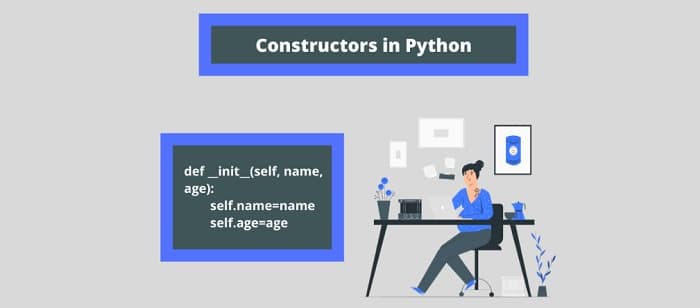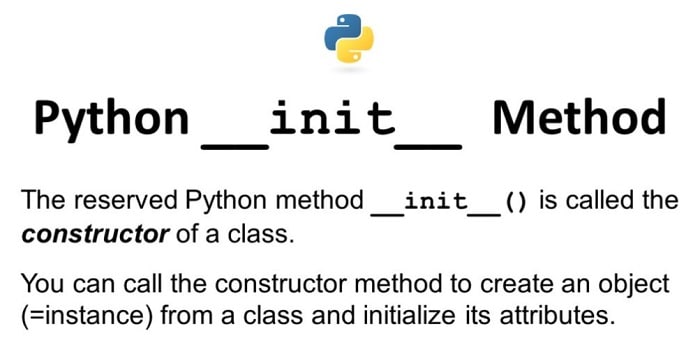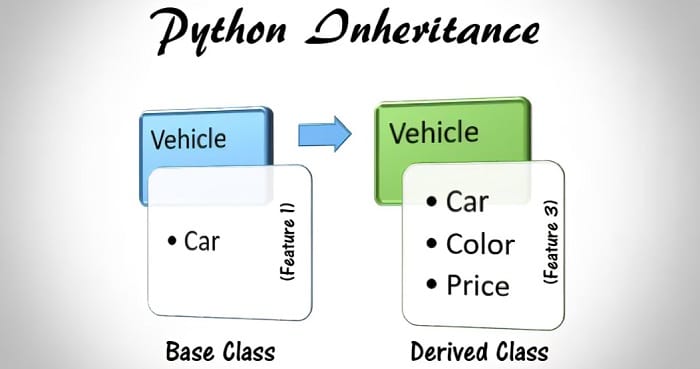In Python, we define constructors using the __init__ method, which the program calls automatically when we create a new class instance. Constructors are a crucial aspect of object-oriented programming, as they allow developers to set the initial state of an object and perform any necessary setup tasks before the program uses the object.

Follow this article to learn more about the working of constructors in Python.
See Also: What Are The Key Features Of Python
Table of Contents
How Constructors Work In Python
To understand how constructors work in Python, let’s first consider the basic syntax of a class definition in Python.

Here is an example of a simple class definition in Python:
Class MyClass:
# Class attribute attribute = "class attribute" # Constructor def __init__(self): self.attribute = "instance attribute" # Instance method def my_method(self): return self.attribute
The __init__ Method
The constructor initializes the object by calling the __init__ method when creating it.. All instance methods in Python have this self-argument, allowing them to access and modify the object’s instance data.

The __init__ method can accept additional arguments beyond self, which you can use to initialize the object with specific data. For example, the following __init__ method accepts two arguments, name and age, and uses them to initialize the instance data of the object:
class Person:
def __init__(self, name, age): self.name = name self.age = age
To create a new instance of the Person class, you would call the class name as if it were a function, passing in any necessary arguments:
person = Person("John", 30)
This will create a new Person object named “John” and age 30. The __init__ method will call automatically to initialize the object, setting the name and age attributes of the object to the values passed in as arguments.
It’s important to note that the program calls for the __init__ method automatically when you create a new class instance but not when the class defines itself. It should be noted that the code within the __init__ method will only run when a class instance is created, not during the class definition.
See also: Difference Between Cat5 And Cat6 Ethernet Cable: Pros And Cons
Use Of Constructors
One everyday use of constructors is to perform setup tasks necessary before the program can use the object. For example, a constructor might open a file or establish a database connection that the object needs.

For example, the following __init__ method initializes the name and age attributes of the Person object:
class Person:
def __init__(self, name, age): self.name = name self.age = age
When creating the Person object, you can specify the values for the name and age attributes by passing them in as arguments.
It’s also possible to define default values for the arguments of the __init__ method if the caller does not provide them. For example, the following __init__ method sets a default value of “Unknown” for the name argument:
class Person:
def __init__(self, name="Unknown", age): self.name = name self.age = age
In this case, if you create a Person object without providing a value for the name argument, it will set to the default value of “Unknown”.
See Also: What Are The Use Cases Of Python?
Feature Of Constructors
Another critical aspect of constructors is inheritance. In Python, a class can inherit properties and methods from another class known as the base class. When constructors derive a class from a base class, it can override or extend the behavior of the base class by defining new methods or attributes or modifying the existing ones.

For example, consider the following class hierarchy:
class Animal:
def __init__(self, species):
self.species = species
class Cat(Animal):
def __init__(self, name, breed):
super().__init__("Cat")
self.name = name
self.breed = breed
In this example, the Cat class derives from the Animal class, which means it inherits the __init__ method and the species attribute from the Animal class. However, the Cat class also defines its __init__ method and adds two additional attributes, name and breed.
The Cat class uses the super() function to call the __init__ method of the base class, which initializes the species attribute of the object. The Cat class then initializes the name and breed attributes of the object using the arguments passed in by the caller.
This allows you to create a Cat object by calling the Cat constructor with the name and breed arguments while still inheriting the behavior of the Animal class.
See Also: How To Set Environment Variables In Python?
FAQS
What is the purpose of the self parameter in a constructor?
The self-parameter in a constructor refers to the Object being created. It is used to access the Object's attributes and methods and set their initial values.
Can a class have multiple constructors in Python?
No, a class can only have one constructor in Python. However, you can define default values for parameters in the constructor so that objects can be created with different initial values.
How are attributes initialized in a constructor?
Attributes are initialized in a constructor by assigning values to them using the self keyword. For example, self.name = name would initialize the name attribute of an object with the value of the name parameter passed to the constructor.
What is the difference between a constructor and a method in Python?
A constructor is a special method called automatically when an object creates and uses to initialize the Object. Conversely, a method is a regular function that calls on an object to perform some action or return a value.
Can a subclass have its constructor in Python?
Yes, a subclass can have its constructor in Python. If a subclass has a constructor, it must call the constructor of its superclass using the super() function to ensure that the superclass's initialization code is also executed.
What happens if a constructor is not defined in a class in Python?
If a constructor is not defined in a class in Python, the default constructor is used. The default constructor takes no parameters and does not perform any initialization tasks.
Conclusion
Constructors are an essential aspect of object-oriented programming in Python. They allow you to initialize objects and perform necessary setup tasks when you create them. Constructors can accept arguments to customize an object’s data. You can use them in conjunction with inheritance to extend the behavior of a base class. Understanding how to use constructors effectively is crucial for any Python developer working with object-oriented code.
See Also: How To Fix SyntaxError Unexpected EOF While Parsing?
Hi, I’m Geoff. I design. I develop. I do lots of things in between. What that really boils down to is that I make websites.